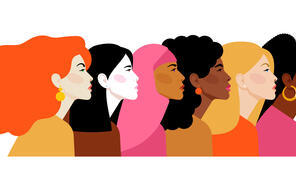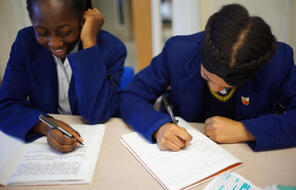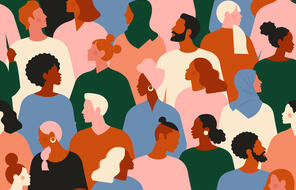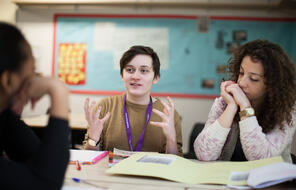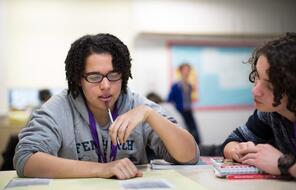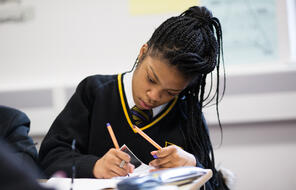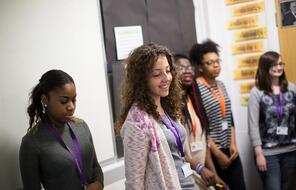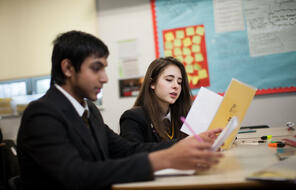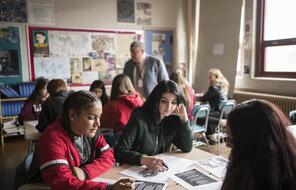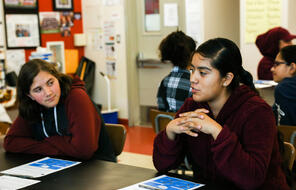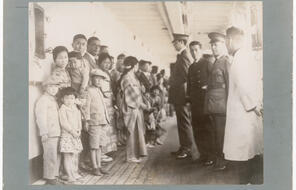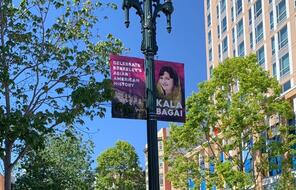
Understanding Gendered Islamophobia
Duration
Two 50-min class periodsLanguage
English — UKPublished
Overview
About This Lesson
This is the fourth lesson in a unit designed to help teachers have conversations with their students about contemporary Islamophobia in a safe, sensitive and constructive way. Use these lessons to help your students reflect on Islamophobia – how it manifests in contemporary society and its impact – and consider what needs to be done to challenge it.
In this lesson, students explore what gendered Islamophobia is and how it manifests. In the first part of the lesson, students reflect on identity; learn about intersectionality; and discuss gendered Islamophobia case studies to better understand how Islamophobia impacts women. In the second part of the lesson, students reflect on and discuss clothing and choice; consider how the religious clothing Muslim women wear is portrayed as oppressive; and read Muslim women’s views of religious clothing, before completing an Exit Card capturing how the lesson has impacted their thoughts and feelings.
Giving students the opportunity to reflect on identity is an important step before introducing students to intersectionality, which highlights how people’s different social identities can mean they experience several forms of discrimination simultaneously. Learning about intersectionality can help students understand how Muslim women are targeted in different ways from Muslim men: they can experience gender oppression, in addition to religious and racial oppression. Furthermore, sharing relevant case studies helps students see how gendered Islamophobia manifests and the human impact of such discrimination.
Moreover, inviting students to reflect on clothing and choice is a useful way of helping them connect with the importance of allowing people to choose what they wear and critically consider the problematic way in which Muslim women are targeted on account of religious clothing; hearing from Muslim women about their views on religious clothing highlights the diversity within the Muslim community and, importantly, foregrounds the voices of Muslim women, who are often excluded from debates on religious clothing; and giving students the chance to complete an Exit Card allows teachers to learn about how the content of the lesson has impacted them.
We recommend that you do preparatory work on discussing Islamophobia and Islamophobic tropes by teaching at least the first two lessons Confronting Islamophobia and Exploring Islamophobic Tropes if you have not already done so.
We also recommend that you revisit your classroom contract before teaching this lesson. If you do not have a class contract, you can use our contracting guidelines for creating a classroom contract or another procedure you have used in the past.
Preparing to Teach
A Note to Teachers
Before teaching this lesson, please review the following information to help guide your preparation process.
Lesson Plans
Activities: Part I
Activities: Part II
Extension Activities
Materials and Downloads
Quick Downloads
Download the Files
Resources from Other Organisations
Understanding Gendered Islamophobia
Addressing Islamophobia in the Media
Standing Up Against Contemporary Islamophobia
Unlimited Access to Learning. More Added Every Month.
Facing History & Ourselves is designed for educators who want to help students explore identity, think critically, grow emotionally, act ethically, and participate in civic life. It’s hard work, so we’ve developed some go-to professional learning opportunities to help you along the way.
Exploring ELA Text Selection with Julia Torres
On-Demand
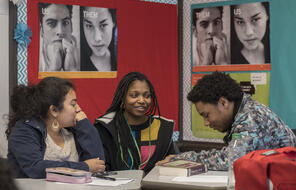
Working for Justice, Equity and Civic Agency in Our Schools: A Conversation with Clint Smith
On-Demand

Centering Student Voices to Build Community and Agency
On-Demand





